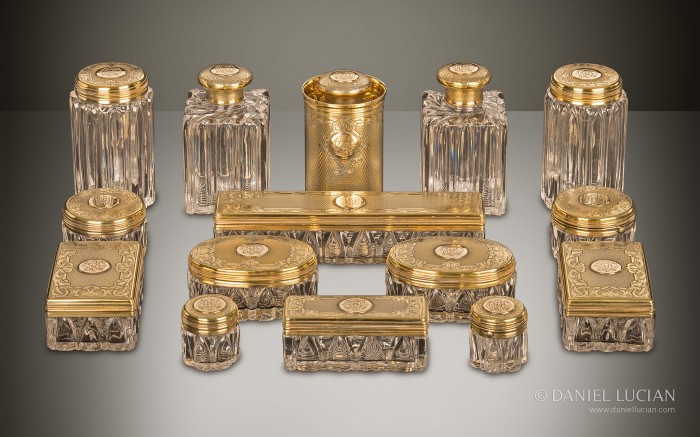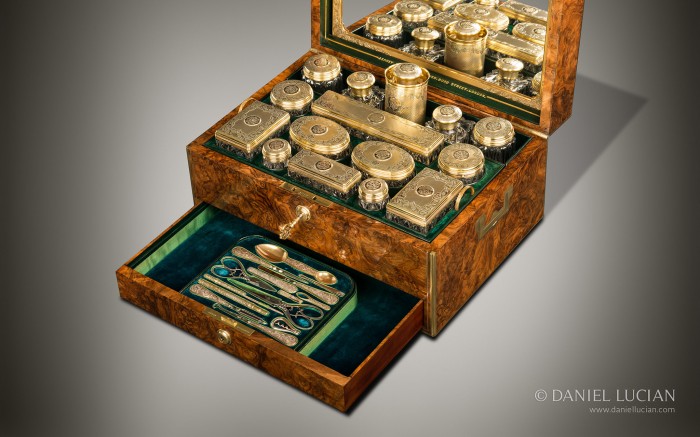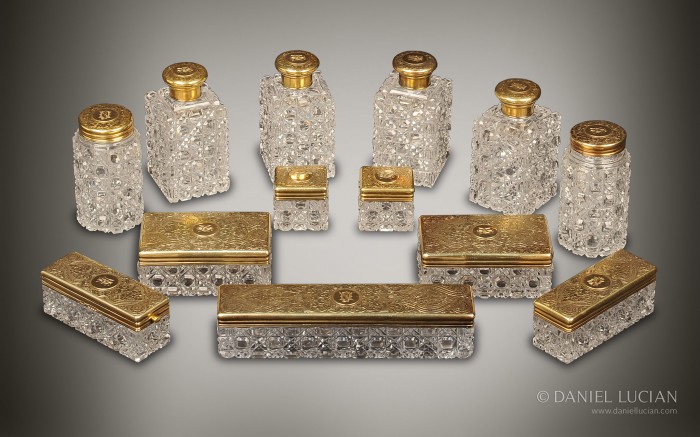Gilding
Gilding is the process of coating a metal with a thin layer of a pure gold. To perform this task during the 19th century, a process called fire-gilding or mercury gilding was used.
The item to be gilded or ‘gilt’ would be first cleaned and prepared. Depending on the item’s material and finish, a solution of mercury nitrate would be spread over its surfaces to enable better application and bonding. An amalgam of gold (a substance formed by the reaction of mixing mercury with gold) would then be spread evenly over the surface of the item. Using controlled, fire based heat, the mercury portion of the amalgam would evaporate, leaving a matt dull yellow gold coating to the metal. With further chemical preparation this colour would be brought up to a vibrant yellow gold.
Just about all the box’s interior and exterior metal components and fittings could be gilded.
Note: Silver-gilt refers to the process of gilding onto solid silver; this is often seen applied to the silver bottle and jar tops belonging to the finest dressing cases.
Unfortunately, through lack of knowledge and precaution, it was very common for gilders and anyone working around mercury preparation, to die of mercury poisoning. Due to the extreme toxicity of mercury and the excessive precautionary measures needed to combat it, very few places today are allowed to carry out this form of gilding.



 Price On Application
Price On Application